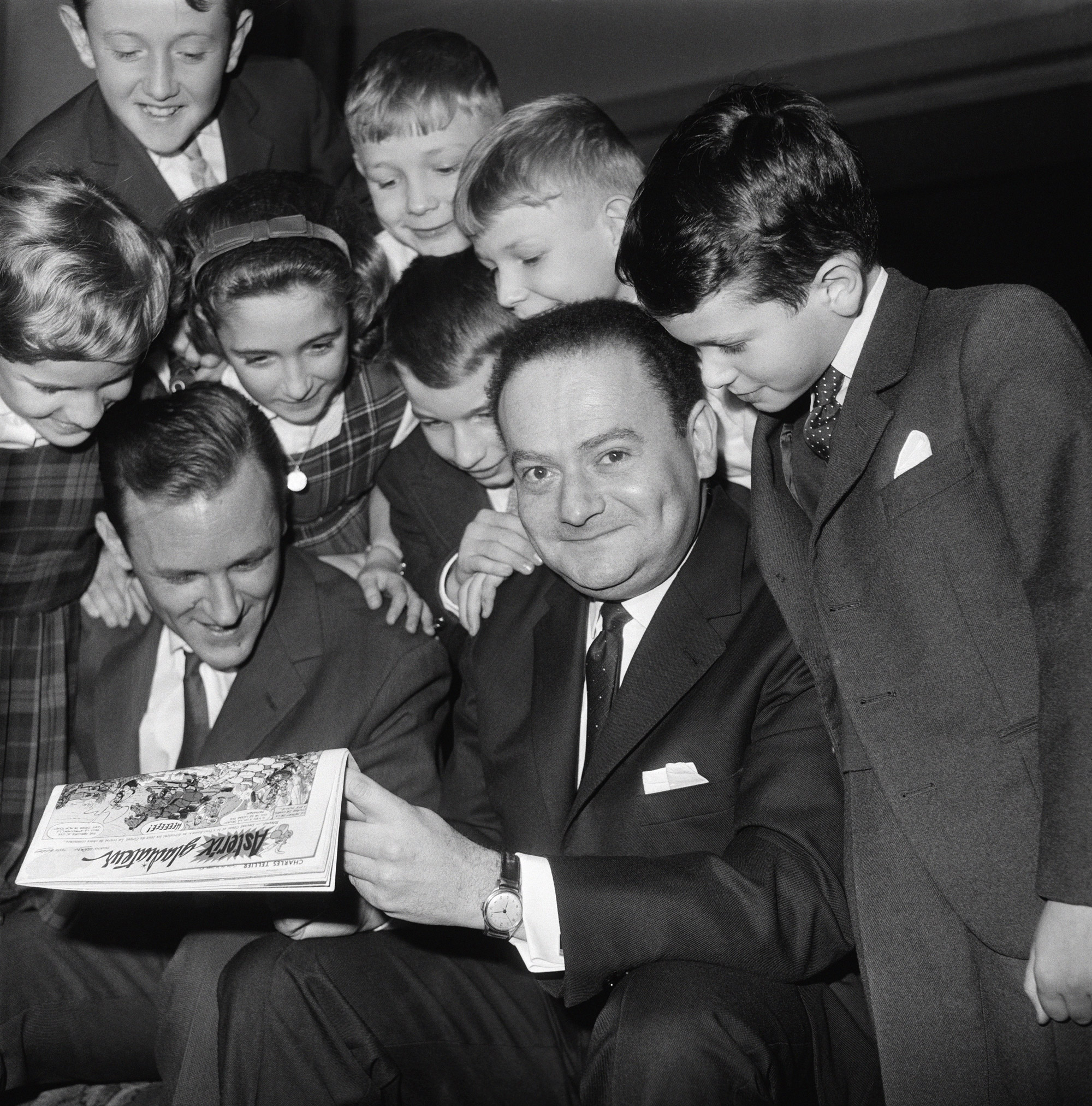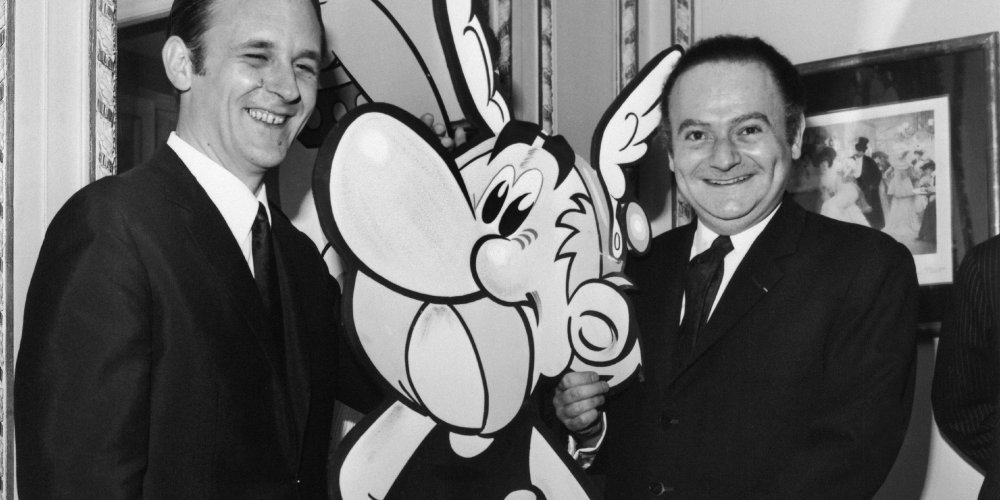Asterix, a fictional character straight out of the imagination of screenwriter René Goscinny and cartoonist Albert Uderzo, was born on October 29, 1959. And the irreducible Gallic quickly finds his audience, with his sidekick Obélix. Back on its history ...
The birth of Asterix, from hesitant beginnings to consecration
In total, there are 500 million albums sold worldwide since its creation. This "national myth" was born in 1959, when René Goscinny and Albert Uderzo, lovers of France, realized that we had forgotten the Gauls. The acolytes are both children of immigrants who knew France from afar and fantasized it before joining. In an interview dating back to the 70s, René Goscinny says "In France we had forgotten the Gauls, we found ourselves in the position of Americans who would have rediscovered the Wild West, so we discovered our Wild West to us."

Keystone-France / Contributor
It all started with an illustration order in the "Pilote" youth newspaper, of which René Goscinny was the editor-in-chief, who wants to highlight French culture through an entertaining comic strip. The first issue of "Pilote" is released on October 29, 1959, and we discover the first board of Asterix the Gaulish. Gradually, the character takes his independence, it is shaped, just like the others: each villager has a mustache provided and an imaginative name ending in "ix". After modest beginnings, Asterix becomes the hero of a comic book in its own right and the craze for these Gallic comes quickly. Sales explode, especially when the release of the album "Asterix among Britons" (eighth volume) in 1966.
Asterix and Obelix, albums between truth and fantasy
With this inspiration from history, René Goscinny and Albert Uderzo have relied on a solid historical foundation by regularly documenting each album project, and alternating between real events and comic interpretation. For example, in 52 BC, Alesia was taken, and Vercingetorix did lay down his arms. In the album, the two repeat these elements by changing one thing: Vercingetorix lays down the arms on the feet of Caesar, and not at the feet of Caesar.
These are all anecdotes that alternate between the real and fantasy fantasy to romance comics. Other historical truths appear: the Romans going to the baths, the battles of the gladiators, Queen Cleopatra, and the big banquets. On the other hand, Asterix and Obelix have never existed.
Asterix and Obelix albums full of current references
Almost 40 years to the day after the disappearance of one of his two fathers René Goscinny, the last album "Asterix and the Transitalique" appears. If at the first level of reading, it is a simple story understood by the children, the albums of the adventures of the Gauls are in fact full of under-heard in connection with their time and are inspired by public figures.
Among these albums whose readers have found similarities with reality, the album "Obelix and company" published in 1976, in which we easily discover that Jacques Chirac - Prime Minister at the time - inspired the creators to embody a character in this story. Some argue, arguing that the creators not only transmit the message of the Gauls, but also a Gaullist message. René Goscinny will answer that his only concern is humor: "I have no other problem than gag". In other albums, we also find Laurel and Hardy, and also Lino Ventura. Beyond these characters known to all, everyone recognizes a loved one: the grumbler, the capricious, the sulky, the lover, the traveler, the dreamer, the brawler, ...
René Goscinny and Albert Uderzo also take advantage of their albums to wink at their loved ones who inspire new characters, including Gilberte, Goscinny's wife he met on a boat trip, and that he staged this way in drawing. Another album "Zizanie" refers to a conflict period of their writing team.
The Gauls are such a success that they now belong to the French heritage. Several comic strip movies have come into being, and even the amusement park, Parc Astérix ... Today, René Goscinny has been dead since 1977, Albert Uderzo is 90 years old, and the memory of the Gallic seems never go out.




